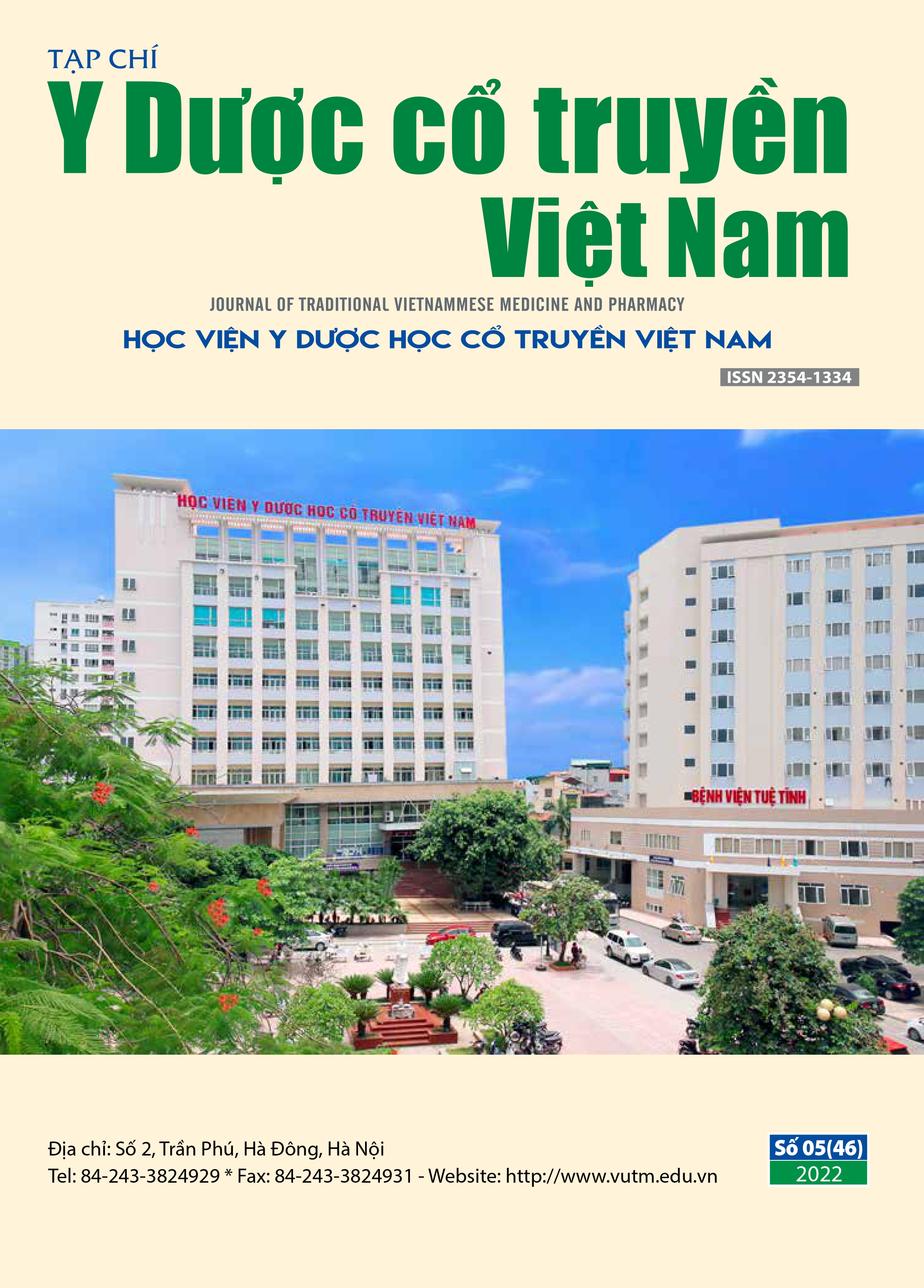Multi-response optimization of an extraction procedure of rosmarinic acid from Prunella vulgaris L. and antioxidants using
Nội dung chính của bài viết
Tóm tắt
Prunella vulgaris L. (PV) have been reported to have a variety of important biological activities. A process for rosmarinic acid (RA) extraction - antioxidants from PV was performed to obtain the highest extraction yield, strongest antioxidant activity and optimized by a multi-response optimization process. A three-level three-factor Box- Behnken design (BBD) was performed as response surface methodology (RSM) with desirability function (D) to attain the optimal extraction parameters. The rosmarinic acid extraction rate was determined by UV-Vis method with linear line Y = 2.1033x + 0.1108, R2 = 0.9966. The DPPH
and ABTS●+ scavenging percentage was used to represent the antioxidant ability. The maximum D value of 0.251, along with the maximum yield (6.025%), %RA (0.115%), scavenging percentage DPPH (IC50) (84.975 µg/ml) and ABTS
(TEAC) (0.207) were achieved after an ethanol
concentration of 60o, an extraction time of 60 min, using an extraction temperature of 50°C.
Chi tiết bài viết
Tài liệu tham khảo
2. Su-Juan Wang, et al. (2019), “Prunella vulgaris: A Comprehensive Review of Chemical Constituents, Pharmacological Effects and Clinical Applications”, Current pharmaceutical design. 25(3), pp. 359-369.
3. Shi Yong Ryu, et al. (2000), “Anti-allergic and anti-inflammatory triterpenes from the herb of Prunella vulgaris”, Planta medica. 66(04), pp. 358-360.
4. Dejian Huang, Boxin Ou, Ronald L Prior (2005), “The chemistry behind antioXidant capacity assays”, Journal of agricultural and food chemistry. 53(6), pp. 1841-1856.
5. Soraya Rodríguez-Rojo, et al. (2012), “Assisted extraction of rosemary antioXidants with green solvents”, Journal of Food Engineering. 109(1), pp. 98-103.
6. N Mulinacci, et al. (2011), “Storage method, drying processes and extraction procedures strongly affect the phenolic fraction of rosemary leaves: an HPLC/DAD/MS study”, Talanta. 85(1), pp. 167-176.
7. Miguel Herrero, et al. (2010), “Supercritical fluid extraction: Recent advances and applications”,
Journal of Chromatography a. 1217(16), pp. 2495-2511.
8. Kashif Ghafoor, et al. (2009), “Optimization of ultrasound-assisted extraction of phenolic compounds, antioXidants, and anthocyanins from grape (Vitis vinifera) seeds”, Journal of agricultural and food chemistry. 57(11), pp. 4988-4994.
9. Amma G Adomako-Bonsu, et al. (2017), “AntioXidant activity of rosmarinic acid and its principal metabolites in chemical and cellular systems: Importance of physico-chemical characteristics”, Toxicology in vitro. 40, pp. 248-255.

